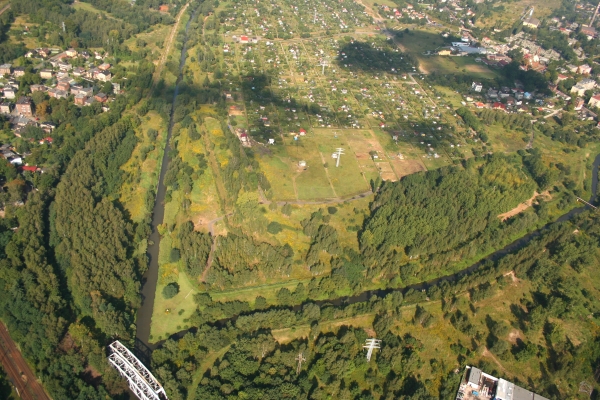- You are here:
- www.sosnowiec.pl
- Miasto
- Monuments of Sosnowiec
- The Three Emperors Triangle
The Three Emperors Triangle
During the Congress of Vienna in 1815, the authorities of Russia, Austria and Prussia decided on the new division of Europe. On the territory of Poland they decided to establish the Kingdom of Poland under the rule of Russia and the Free City of Cracow under the rule of Austria, both bordering on Prussia on the joint of the Biała and Czarna Przemsza Rivers. In 1846 after the end of the Cracow uprising, the Free City of Cracow was annexed to Austria. Since then, the joint border of the partitioners (i.e. Mysłowice in Prussia, Niwka, Modrzejów – the present Sosnowiec in Russia, and Jęzor - the present Sosnowiec in Austria) has been called „Drei Lander Ecke”. After the Prussian and French War, establishment of the German Empire and creation of the so-called League of the Three Emperors in 1873, it was customarily dubbed „Der Kaiser Ecie”. In should be stressed that the above name was wrongly translated into Polish as the „Three Emperors Triangle” instead of the „Three Empires Corner”.

The place has soon become a tourist attraction. In a period of time from 1880 to 1914 Mysłowice and its region was visited by millions of sightseers coming not only from the Upper and Lower Silesia, but also from the whole territory of Germany. Each week around 3000-6000 persons arrived here to enjoy the numerous attractions, such as getting across the border of the territory annexed by Russia and Austria, walking through the so-called Promenade on the German side, spending free time in the entertainment garden, admiring the view from the Bismarck tower or going on ship or boat cruises on the Przemsza River.
Border traffic was of great importance for borderland residents of all annexed territories, enabling thousands of people to pass through the border bridges for trading purposes. It might be illustrated on the example of a bridge leading from Mysłowice to Modrzejów. In 1897 alone an impressive number of 1,200,000 people crossed this bridge. It was also the time of a smuggling boom. Despite the high risk involved in smuggling, it was the main source of income for whole families and local settlements.

Data from the German-Russian border records of 1906, according to which as many as 11 thousand people were detained on the charge of smuggling (4831 of them were professional smugglers), illustrate very well the scale of the illegal trade.
The „Triangle” or the „Corner” was well-known in the whole Europe till the end of the First World War. The defeat of Germany, collapse of the Austro-Hungarian Land, revolution in Russia, Silesian uprisings in 1919-1921 and the Upper Silesian plebiscite, resulted in the abolishment of the partitioners' borders in 1922 and in the subsequent demise of the „Three Emperors Triangle”.






